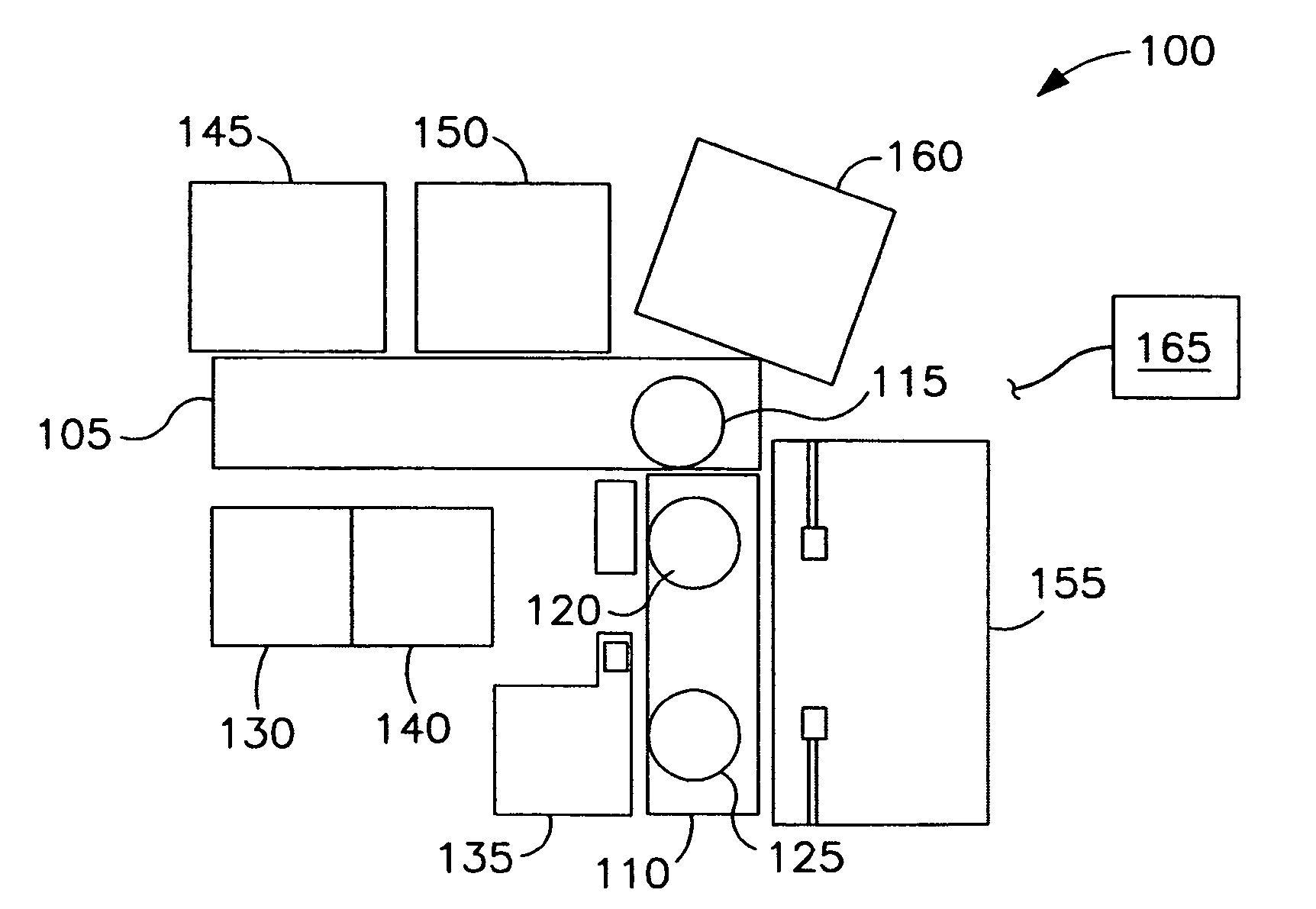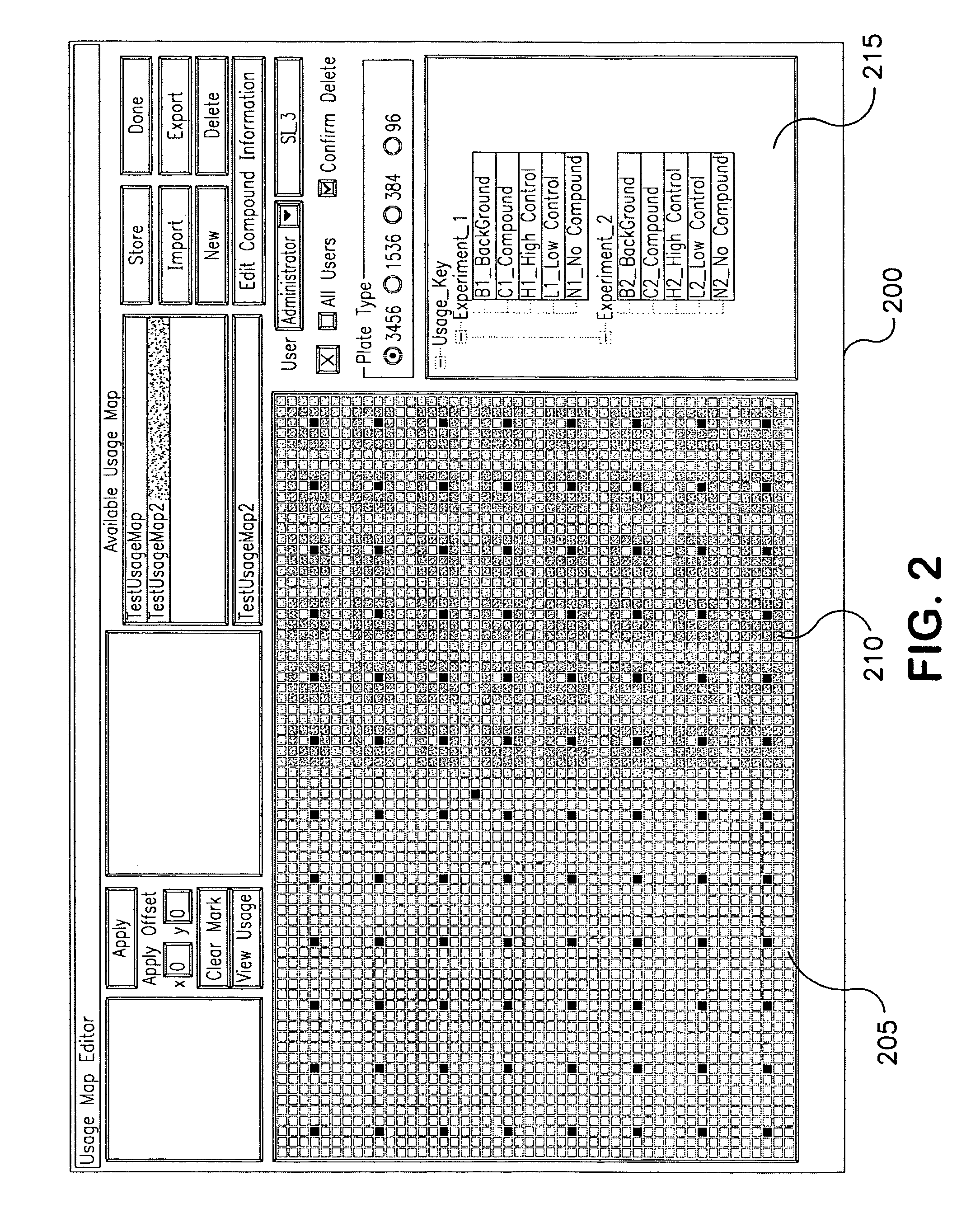Automated laboratory for high-throughput biological assays and RNA interference
a laboratory and high-throughput technology, applied in the field of automatic and integrated instruments and methods, can solve the problems of wasting time, wasting time, and wasting time, and requiring repetitive laboratory procedures
- Summary
- Abstract
- Description
- Claims
- Application Information
AI Technical Summary
Benefits of technology
Problems solved by technology
Method used
Image
Examples
example 1
Automated Modular Components of an siRNA Screening Laboratory
[0134]The following example depicts a typical arrangement of automated high-throughput biology laboratory modules useful for siRNA screening in high-density multiwell plates and describes the functions of each module. The laboratory includes modules for the storage and incubation of plates, for dispensing liquids to the plates to construct assay samples, and for reading the signals generated by the assay samples in the plates.
[0135]The automated high-throughput biology laboratory is arranged around a rotary robotic arm located on a linear transport stage or track. The arm is used to transport plates between the different modules of the laboratory. A variety of arms are useful for plate transport, including the CataLyst5 track system (Thermo CRS) and the rotary articulating arms available from Mitubishi (e.g., MELFA RV2AJ). A dynamic plate gripper is located at the active end of the arm. The plate gripper is used to secure ...
example 2
A Biosensor Cell Line for siRNA Screening
[0143]The biosensor cell line is a cell line that enables the activity of a specific signal transduction pathway to be monitored by measuring fluorescence of an exogenously added fluorescent reagent. The cell line is useful for siRNA screening by knocking out different gene products comprising the signal transduction pathway. The biosensor cell is constructed by transfection with different expression vectors that encode reporter genes, membrane receptors for pathway activators, and components of the signal transduction mechanism. In this example, the reporter gene encodes βlactamase, which produces a change in the fluorescence of the signaling reagent CCF2. CCF2 is a fluorescence energy transfer reagent consisting of a coumarin group linked to a fluorescein group by a cephalosporin moiety. In the absence of β-lactamase expression, excitation of the coumarin with light in the wavelength range of 390 to 430 nm results in non-photonic transfer o...
example 3
Real-time Gene Expression Knock-out by siRNA
[0147]In this example, the carbachol-activatable Jurkat biosensor cell line is used to examine the knocking out of an intracellular calcineurin. The siRNA sequence is designed by the use of SMARTselection and SMARTpool technologies and synthesized (Dharmacon RNA Technologies, Boulder, Colo.). SMARTselection provides rational design of the sequence to minimize certain undesirable features of 21- and 22-base oligomers, such as foldback hybridization, low or high duplex melting temperature, and other features that interfere with message specificity. SMARTpool provides for the generation of up to 6 separate siRNA sequences designed to hit the same target message. Combinations of siRNA sequences targeted to the same message have been shown to result in greater knock down of target message than a single siRNA sequence. A screen may be designed to test each sequence singly and in different combinations to isolate the most potent mixture. For tran...
PUM
| Property | Measurement | Unit |
|---|---|---|
| volume | aaaaa | aaaaa |
| volumes | aaaaa | aaaaa |
| volumes | aaaaa | aaaaa |
Abstract
Description
Claims
Application Information
 Login to View More
Login to View More - R&D
- Intellectual Property
- Life Sciences
- Materials
- Tech Scout
- Unparalleled Data Quality
- Higher Quality Content
- 60% Fewer Hallucinations
Browse by: Latest US Patents, China's latest patents, Technical Efficacy Thesaurus, Application Domain, Technology Topic, Popular Technical Reports.
© 2025 PatSnap. All rights reserved.Legal|Privacy policy|Modern Slavery Act Transparency Statement|Sitemap|About US| Contact US: help@patsnap.com



